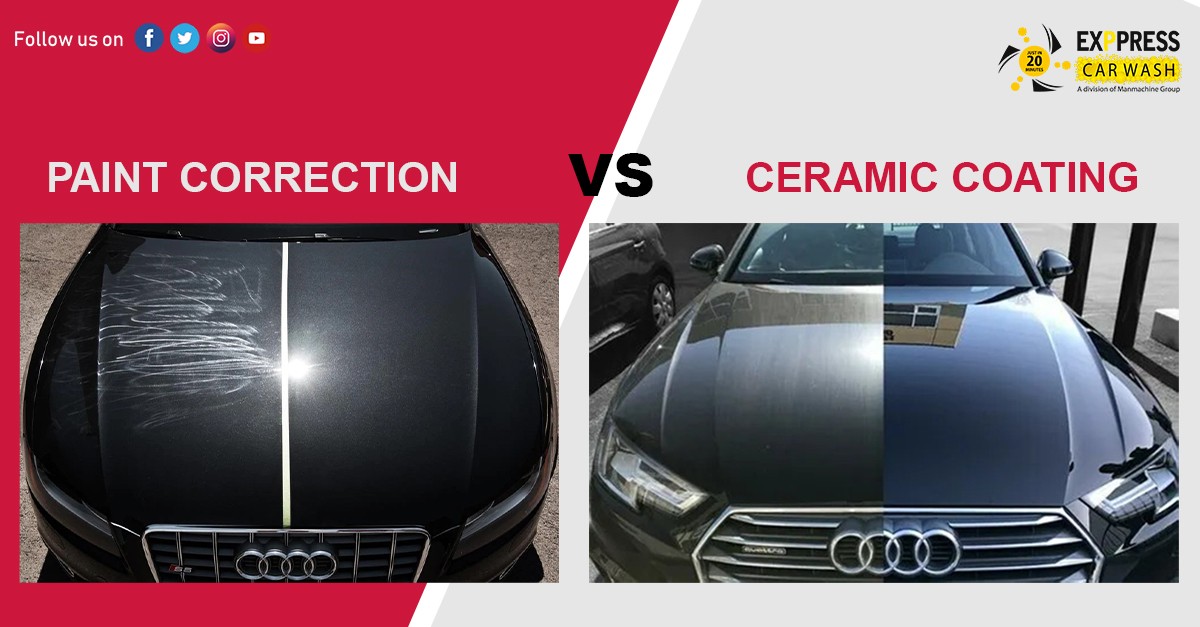Why Picking Ceramic Coating Can Protect Your Car's Complete Long-Term
Why Picking Ceramic Coating Can Protect Your Car's Complete Long-Term
Blog Article
The Duty of Ceramic Layer in Protecting Your Car's Paint From Environmental Damage
Ceramic finishing has actually emerged as an innovative option for vehicle owners seeking to preserve the integrity of their automobile's exterior. As we check out the subtleties of ceramic coating, it becomes obvious that the selection to apply this protective measure might substantially affect your lorry's longevity and aesthetic.
What Is Ceramic Finishing?
Ceramic finish is an innovative liquid polymer put on the outside surface areas of a lorry, made to provide a resilient layer of security for the paint. This ingenious service develops a chemical bond with the car's manufacturing facility paint, producing a hydrophobic and resistant guard. The layer contains nanoparticles that fill out the tiny blemishes in the paint, leading to a smooth surface area that improves radiate and gloss.
Normally, ceramic layers are readily available in numerous solutions, enabling for different levels of protection and longevity. While some items can last for numerous months, others supply defense for a number of years, relying on the density of the application and ecological elements. The application procedure needs careful prep work, including washing, decontaminating, and brightening the lorry's surface area to make certain optimum attachment of the finish.
Benefits of Ceramic Finishing
Among the main advantages of using a ceramic finish is the outstanding security it provides to automotive paint. This advanced layer develops a resilient layer that guards the lorry's surface from a selection of environmental hazards, including UV rays, acid rainfall, bird droppings, and tree sap. By giving this robust protection, ceramic finishings significantly minimize the danger of fading and etching, maintaining the cars and truck's aesthetic charm over time.
Along with defense, ceramic coverings are renowned for their hydrophobic residential or commercial properties, which drive away water and dirt, making it less complicated to maintain a tidy lorry. This self-cleaning impact reduces the frequency of cleaning, saving both time and resources. Ceramic coatings enhance the depth of the paint's gloss, resulting in a sleek and vivid look that raises the overall appearance of the vehicle.
Another remarkable advantage is the durability of ceramic coverings. Unlike typical waxes or sealers that call for regular reapplication, ceramic coverings can last a number of years, providing a cost-effective service for cars and truck owners seeking long-term defense. On the whole, investing in ceramic covering brings about improved sturdiness, reduced maintenance, and sustained aesthetic allure for automotive paint.
How Ceramic Layer Functions
A ceramic covering runs via a chemical bonding procedure that creates a safety layer on the lorry's paint surface. This ingenious option utilizes advanced nanotechnology, where microscopic fragments of silica are suspended in a fluid form - ceramic coating. Upon application, these bits bond with the manufacturing facility paint, developing a resilient and hydrophobic layer that enhances the vehicle's surface
The primary component of ceramic finishings, silicon dioxide (SiO2), adds to the layer's stamina and strength. When treated, the layer changes right into a difficult, glass-like surface that shields the paint from ecological pollutants such as dust, UV rays, bird droppings, and tree sap. This molecular bond causes a surface area that is not just immune to scrapes yet additionally much easier to clean up, as dirt and crud are much less likely to adhere.
In addition, the hydrophobic residential properties of ceramic coverings cause water to bead and slide off, minimizing the opportunities of water spots and mineral down payments. This protective obstacle successfully extends the life of the paint and maintains the car's aesthetic appeal, providing automobile proprietors a resilient option for paint protection.
Application Process of Ceramic Finishing
When thinking about the application of ceramic layer, prep work is key to attaining ideal outcomes. Any scrapes or imperfections should be resolved at this phase, as the recommended you read finish will bond with the surface beneath.

Ceramic finish is then applied in small sections, usually making use of an applicator pad. The lorry needs to be left to heal in a regulated atmosphere to enable the coating to totally bond with the paint.
Long-Term Upkeep and Treatment
Attaining an effective ceramic finishing application establishes the foundation for lasting security, but correct maintenance is important to preserving its benefits. Routine cleaning is crucial; making use of a pH-neutral cars and truck shampoo will certainly assist maintain the finish's integrity without creating damages. Prevent automated vehicle cleans that use unpleasant materials, as they can jeopardize the finish's surface area.

Moreover, applying a ceramic layer maintenance have a peek at this website spray can improve the existing layer, supplying an extra boost in defense and shine. It's suggested to perform this every 3 to 6 months, depending on environmental exposure.
Last but not least, car parking in shaded locations or utilizing car covers can stop prolonged direct exposure to dangerous UV rays and environmental contaminants, additionally extending the life of your ceramic finish. By sticking to these upkeep techniques, you can learn this here now guarantee your vehicle's coating continues to be secured and aesthetically appealing for many years to come.
Verdict
In summary, ceramic layer functions as an important protective action for auto paint, effectively shielding lorries from a variety of ecological dangers. Its capacity to create a robust hydrophobic barrier not just improves visual charm yet also substantially minimizes the regularity and intensity of maintenance required. The resilient nature of this advanced polymer emphasizes its worth in maintaining automobile integrity and look, ultimately contributing to an extra sturdy and aesthetically enticing automobile coating.
Ceramic coating is an innovative liquid polymer applied to the outside surfaces of a lorry, created to provide a long lasting layer of defense for the paint. Ceramic layers improve the depth of the paint's gloss, resulting in a vivid and refined look that elevates the total look of the vehicle.
A ceramic coating runs via a chemical bonding process that develops a safety layer on the car's paint surface area.The main element of ceramic layers, silicon dioxide (SiO2), adds to the coating's stamina and strength.In recap, ceramic layer serves as an important safety measure for automobile paint, effectively shielding vehicles from an array of environmental risks.
Report this page